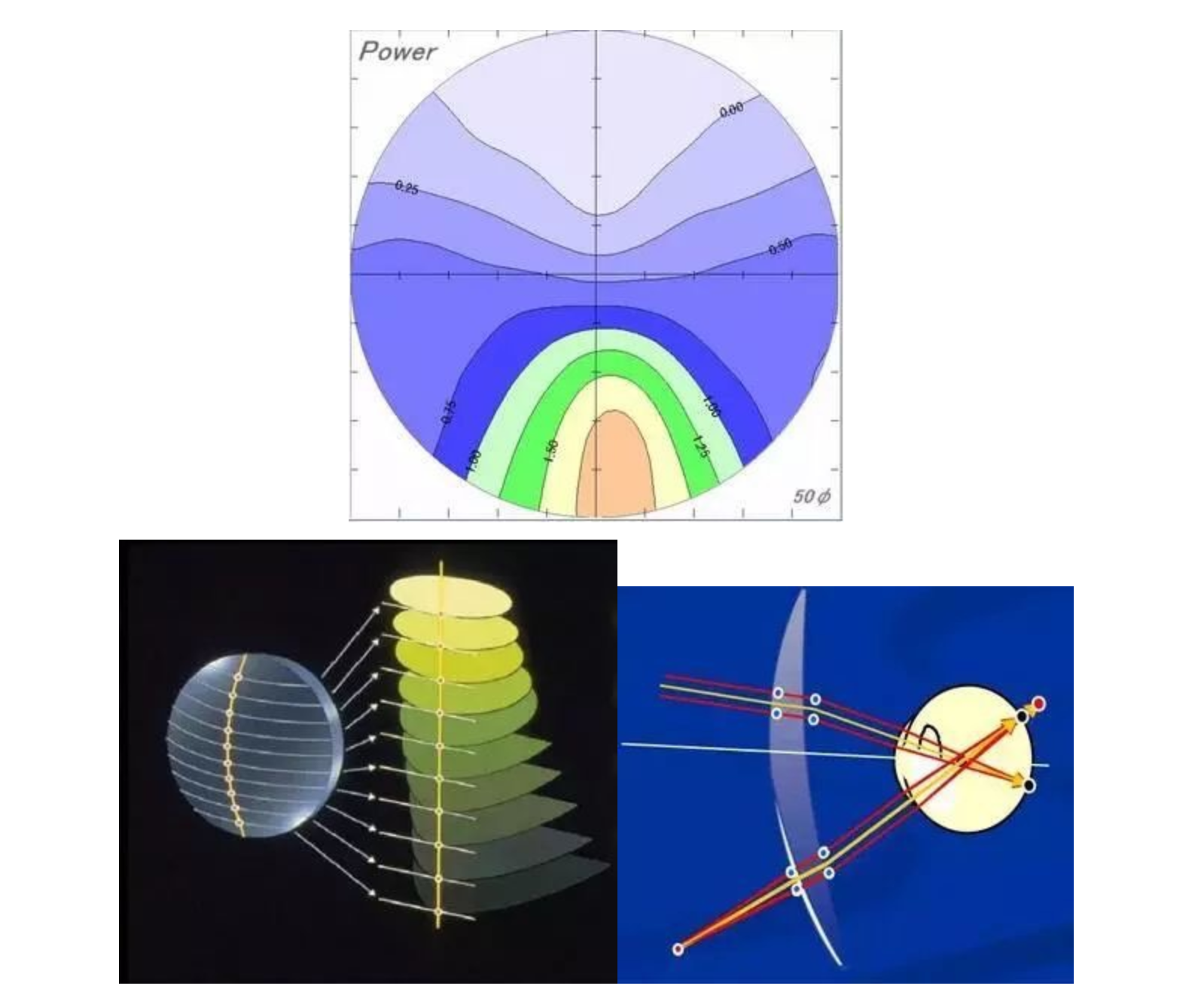Broadly speaking, aspherical surfaces are other surfaces excluding spheres and planes. From an application point of view, aspherical surfaces can be categorized into axisymmetric aspherical surfaces, aspherical surfaces with two symmetry surfaces, and free-form surfaces with no symmetry.
Aspherical surfaces are usually categorized into secondary aspherical surfaces and higher aspherical surfaces. Secondary aspheres are the most widely used in optical systems and have a special position in relation to other types of aspheres. Secondary aspherical surfaces can be divided into: a pair of aspherical surfaces without image points and no aspherical surfaces without image points. The former is widely used in various optical instruments and is the most common aspherical surface. The latter is widely used in the formation of distorted image of the optical system. Higher aspherical surfaces can be divided into monotonic meridian curve surfaces and non-monotonic surfaces. The classification of aspherical surfaces is shown in Figure 1.

Figure 1. Classification of optical aspheres
The general expression for a free surface is Z=∑AijXiYj i,j=0,1,2 ......n. For this type of free surface, although it has lost the axisymmetric feature of aspheric surfaces, it is still regularly expanded around a coordinate origin. The present pair is still regular.
Another class of complex free-form surfaces, which can be defined only in terms of three-dimensional point coordinates, is widely used in progressive multifocal glasses to realize the purpose of distributing the optical focus according to a specific law.

Aspheric lenses, where the radius of curvature varies with the center axis, are used to improve optical quality, reduce optical components, and lower design costs. Aspherical lenses have unique advantages over spherical lenses, and are therefore widely used in the optical instrument, imaging, and optoelectronics industries, such as digital cameras, CD players, and high-end microscopic instruments. It mainly serves the following purposes:
Aspherical lenses are used to replace spherical lenses, and the most significant advantage is that the spherical aberration brought by spherical lenses in the collimation and focusing system can be corrected. By adjusting the surface constants and aspheric coefficients, aspherical lenses can minimize spherical aberration. Aspherical lenses (light rays converge to the same point, providing optical quality), essentially eliminate the spherical aberration (light rays converge to different points, resulting in blurred imaging) created by spherical lenses. Three spherical lenses are used to increase the effective focal length and are used to eliminate spherical aberration. However, one aspherical lens (high numerical aperture, short focal length) can be realized and simplify the system design and provide light transmission.

Figure 2. Spherical aberration canceling aspherical lens
Aspherical lenses simplify the elements involved for optical engineers in order to improve optical quality and at the same time increase the stability of the system. For example, in a zoom system, where 10 or more lenses are typically employed (plus: high mechanical tolerances, additional assembly procedures, improved anti-reflective coatings), similar or better optical qualities can be achieved with 1 or 2 aspherical lenses, thus reducing the system size, increasing the cost ratio, and lowering the overall cost of the system.